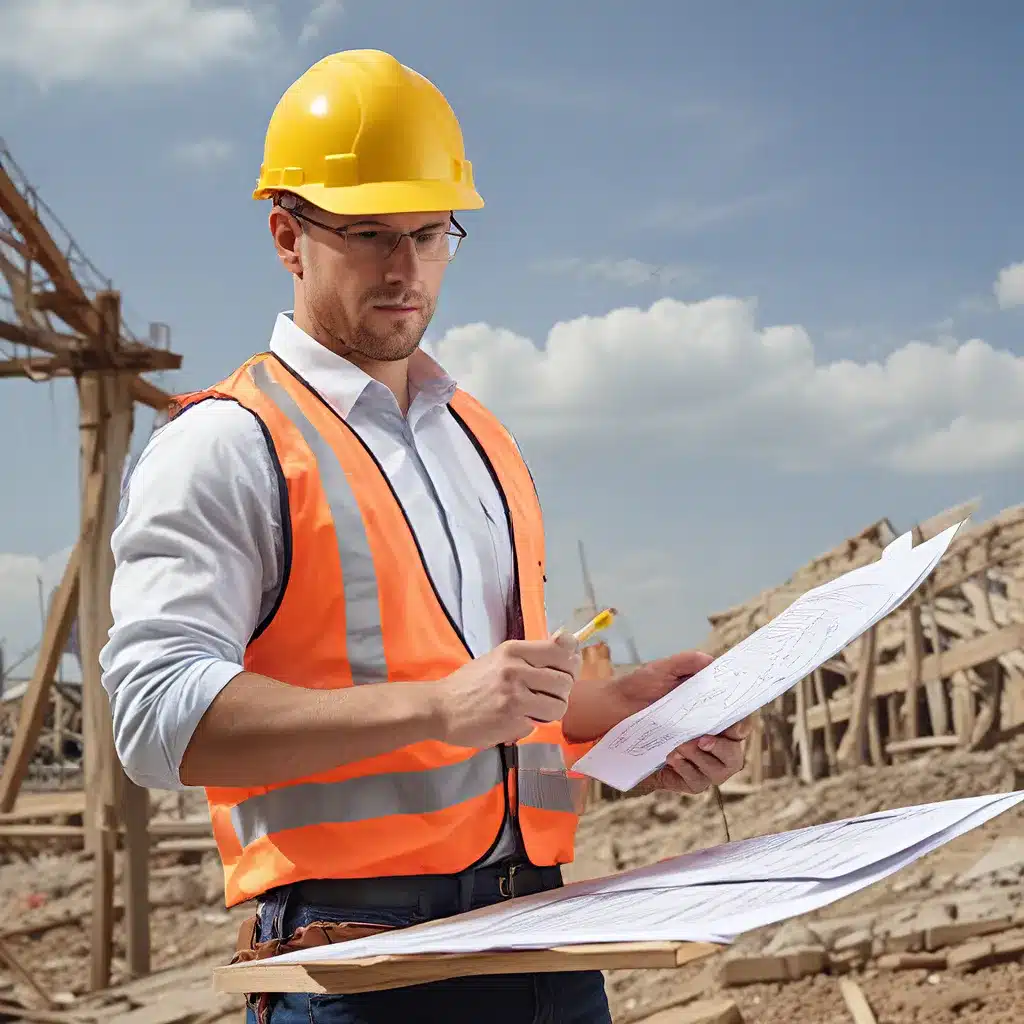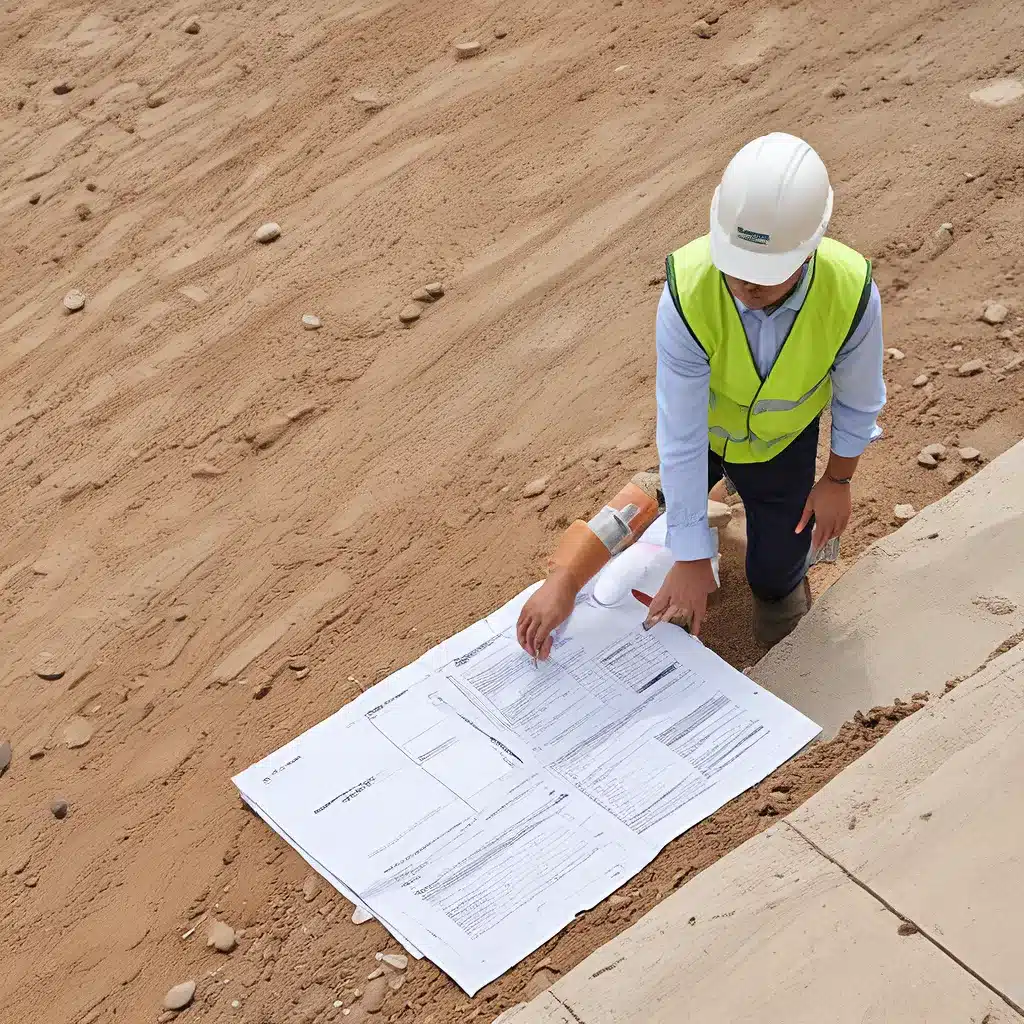
Ah, the wonderful world of general contracting – where risk lurks around every corner, and the only thing more exhilarating than landing a big project is successfully navigating the treacherous waters of construction risk management. As a seasoned general contractor, I’ve seen it all – from budget-busting surprises to safety nightmares that could make even the bravest of hardhat-wearing souls shudder. But fear not, my fellow construction comrades, for I’m here to share with you the strategies and techniques that have kept me and my business afloat (and hopefully, your head above water) in this constantly evolving industry.
Identifying the Risks: Embrace the Unexpected
The first step in any effective risk management plan is to identify the potential threats lurking in the shadows of your construction projects. And trust me, these little gremlins come in all shapes and sizes – from financial woes and contractual disputes to operational hiccups and environmental disasters. It’s like playing a high-stakes game of “Where’s Waldo,” except the stakes are significantly higher, and Waldo is a mischievous little gremlin just waiting to wreak havoc on your project.
Constructconnect’s article on identifying and managing construction project risks is a great resource for understanding the types of risks you might encounter, including financial, contractual, operational, and environmental hazards. And let’s not forget the ever-present risk of, well, human error – because let’s be honest, even the most seasoned professionals can have a momentary lapse of judgment that could send the whole project straight down the drain.
Assessing the Risks: Embrace Your Inner Crystal Ball
Now that you’ve identified the potential risks, it’s time to put on your best Sherlock Holmes hat and start assessing the probability and impact of each one. This is where the real magic happens, folks – where you get to play the role of the ultimate risk management detective.
Procore’s article on construction risk management emphasizes the importance of data in this process. The more historical data you have to analyze, the more accurate your risk assessment will be. It’s like having a crystal ball that’s been polished to perfection – the clearer the picture, the better you can predict the future.
But don’t worry, even if you’re just starting out, you can still make an educated guess on the likelihood and severity of each risk. Sit down with your team, brainstorm, and draw on your collective experiences to identify the high-impact, high-probability risks that need to be tackled first.
Controlling the Risks: Embrace Your Inner Superhero
Now that you’ve identified and assessed the risks, it’s time to put on your cape and become the superhero of risk management. This is where the real fun begins, my friends.
According to MyComply’s article on construction risk management, you have four primary options when it comes to controlling risks: accept it, avoid it, control it, or transfer it. It’s like playing a high-stakes game of “Choose Your Own Adventure,” except the consequences of your choices could make or break your construction project.
Accepting a risk might be the right call for those low-probability, low-impact scenarios, but when it comes to the high-stakes, high-risk situations, you’ll need to get creative. Maybe that means negotiating a better contract with the client, hiring more experienced subcontractors, or investing in specialized equipment to mitigate the risk.
And let’s not forget about transferring the risk – that’s where your friendly neighborhood insurance provider comes in handy. They’re like the superheroes of the financial world, ready to swoop in and save the day (or at least your bottom line) when things go south.
Monitoring and Adapting: Embrace the Constant Flux
But the journey doesn’t end there, my friends. Risk management in construction is an ongoing, ever-evolving process that requires constant monitoring and adaptation. Just when you think you’ve got it all figured out, the construction industry throws you a curveball that could send your carefully crafted plan straight into the trash.
That’s why it’s so important to regularly review your risk management strategies, analyze past successes and failures, and update your processes to reflect the changing landscape of the industry. The team at Reading General Contractor understands this all too well, as they’ve weathered countless storms and emerged stronger for it.
One of the keys to their success? Embracing the constant flux and being willing to adapt on the fly. They’re always on the lookout for new tools, technologies, and best practices that can help them stay ahead of the curve and minimize the impact of unexpected risks.
The Final Frontier: Embrace the Thrill of the Unknown
At the end of the day, risk management in construction is a never-ending journey filled with unexpected twists and turns. But that’s what makes it so darn exciting, isn’t it? The thrill of the unknown, the rush of navigating uncharted waters, the satisfaction of coming out on top despite the odds – it’s all part of the job description for us seasoned general contractors.
So, my fellow construction risk management warriors, embrace the unknown, trust your instincts, and never forget that the key to success in this industry is being willing to take calculated risks. After all, the biggest rewards often come with the biggest risks, and with the right strategies and a healthy dose of grit, you’ll be well on your way to conquering the construction risk management frontier.
Related posts:
No related posts.




